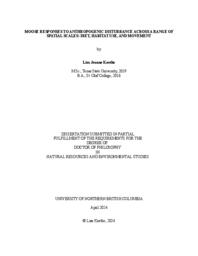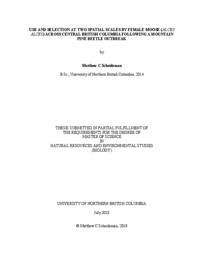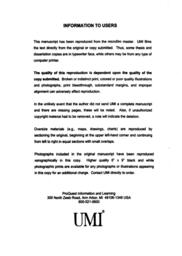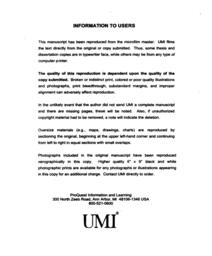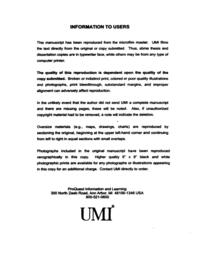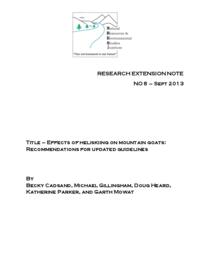Heard, Douglas C.
Person Preferred Name
Douglas C. Heard
Related Works
Content type
Digital Document
Origin Information
Content type
Digital Document
Origin Information
Content type
Digital Document
Description / Synopsis
Habitat loss and climate change are two of the leading causes of the global decline of biodiversity. Declines in the abundance of moose (Alces americanus) in British Columbia, Canada, in the 2000s were hypothesized to result from an interaction between a severe climate-induced insect outbreak and resulting increases in salvage harvest of affected forests. I investigated the behavioral and distributional responses of moose to forest harvesting disturbance across a range of spatial scales and tested the use of N-mixture models and camera trap data to estimate population abundance. At a fine spatial scale, I used microhistological analysis of moose fecal samples to assess the effects of logging on the diet of moose. In areas with greater intensities of forest harvesting, moose consumed fewer forbs, shrubs, and fir trees, and their diet was more diverse. These dietary responses were consistent with the Niche Expansion Hypothesis, which predicted that a generalist herbivore would eat a greater diversity of plants to compensate for decreased availability or quality of preferred forage. I used LiDAR and GPScollar data to test hypotheses that explained the use of horizontal and vertical cover by moose. Risk of predation and hunting (Direct Mortality Hypothesis) was the primary factor that influenced the use of cover. Moose used different forest structures, ranging from open to closed, depending on the threat (predation or hunting) and their response was modulated by maternal status. At a coarser spatial scale, I assessed a suite of hypotheses concerning the causes of partial migration, effects of migration on habitat used, and fitness effects of migration. Wildfire disturbance in the winter range was the primary driver of migration and most migratory moose experienced less wildfire disturbance after leaving their winter range. Migrants displaying specific movement tactics (e.g., distance and timing of migratory movements) experienced increased probability of parturition and neonate survival. Migration exposed moose to increased risk of predation but residents were more vulnerable to health-related causes of mortality. While migration provided some moose with fitness benefits, it did not fully mitigate the amount of wildfire disturbance in the summer range, particularly after severe wildfire seasons. Finally, I tested the sensitivity of estimates of population abundance produced by N-mixture models parameterized with camera trap data to ecological conditions, spatial scale of covariates, the potential for temporally non-independent detections, and model choice based on parsimony. Nmixture models produced accurate and reasonably precise estimates of abundance of moose and were robust to model formulation, the spatial scale of associated covariates, and the criteria used to define independent detection. However, I recommend avoiding measures of parsimony for selecting the model or models to generate a population estimate. In total, the results of my dissertation suggest that land management and forest harvest should maintain forest communities that vary in structure and composition. In particular, large-scale disturbance can alter the diet of moose, expose maternal moose to increased risk of mortality, and, in the case of wildfire, it could lead to a decline in migratory behaviors and populations.
Origin Information
Content type
Digital Document
Origin Information
Content type
Digital Document
Origin Information
Content type
Digital Document
Origin Information
Content type
Digital Document
Origin Information
Content type
Digital Document
Origin Information
Content type
Digital Document
Description / Synopsis
"Prescribed fire is used as a management tool to enhance ungulate habitats. In northeastern British Columbia, up to 7,800 ha are burned annually. Yet relatively few studies have quantified the role of fire on plant and animal response, and whether it enables species such as Stone's sheep (Ovis dalli stonei) and elk (Cervus elaphus). In the Muskwa-Kechika Management Area, we examined the response of Stone's sheep and elk to seasonal changes in forage quantity and quality over an elevation gradient in areas recently burned by prescribed fires versus unburned control areas. We monitored vegetation and fecal-pellet transects at a fine scale and used Landsat imagery, survey flights, and telemetry locations at a landscape scale. One year after burning, forage digestibility and rates of forage growth were higher on burned than unburned areas. At both scales, Stone's sheep and elk always used burns more than unburned areas in winter. Stone's sheep and elk appeared to partition their use of the landscape through topography and land cover. Increased use of burned areas suggests that prescribed fires enhanced habitat value for grazing ungulates at least in the short term. By altering animal distributions, however, use of prescribed fire has the potential to change predator-prey interactions."
Origin Information
Content type
Digital Document
Description / Synopsis
"Heliskiing activity has increased in many areas of mountain goat (Oreamnos americanus) range, particularly in British Columbia (B.C.). Current B.C. guidelines recommend that heliskiing activity remains ≥1500 m from mountain goat winter range when the helicopter is visible to animals, and ≥500 m when the helicopter is masked by topography. Whether these guidelines effectively prevent disturbance of mountain goats, however, is unknown. In 2007 - 2010, we examined locations and movements of 11 female mountain goats relative to heliskiing activity. We determined the proximity and frequency of heliskiing activity that animals were exposed to given current guidelines, and through examination of disturbance responses, determined how guidelines could be revised to better mitigate impacts of heliskiing activity. Although adherence to current guidelines eliminated most heliskiing activity that could result in disturbance, incidental helicopter approaches occurred within 1500 m of collared mountain goats with frequencies of exposure up to 1 h ∙ month⁻¹ ∙ animal⁻¹. Animals reacted to helicopters ≤2 km away, and responded equally to visible and non-visible helicopters. Seasonal effects on movement behaviour, however, were not evident, potentially because of the low frequency of helicopter exposure. We recommend that the B.C. guidelines be revised to: 1) establish no-fly areas within 1500 m of goat habitat regardless of visibility; 2) require pre-planning of heliskiing activities to ensure that no-fly areas are effectively avoided; and 3) extend no-fly areas to 2 km where heliskiing frequencies exceed 1 h ∙ month⁻¹ to minimize the cumulative effect of incidental encounters. These guidelines should apply consistently to all helicopter activity."
Origin Information



